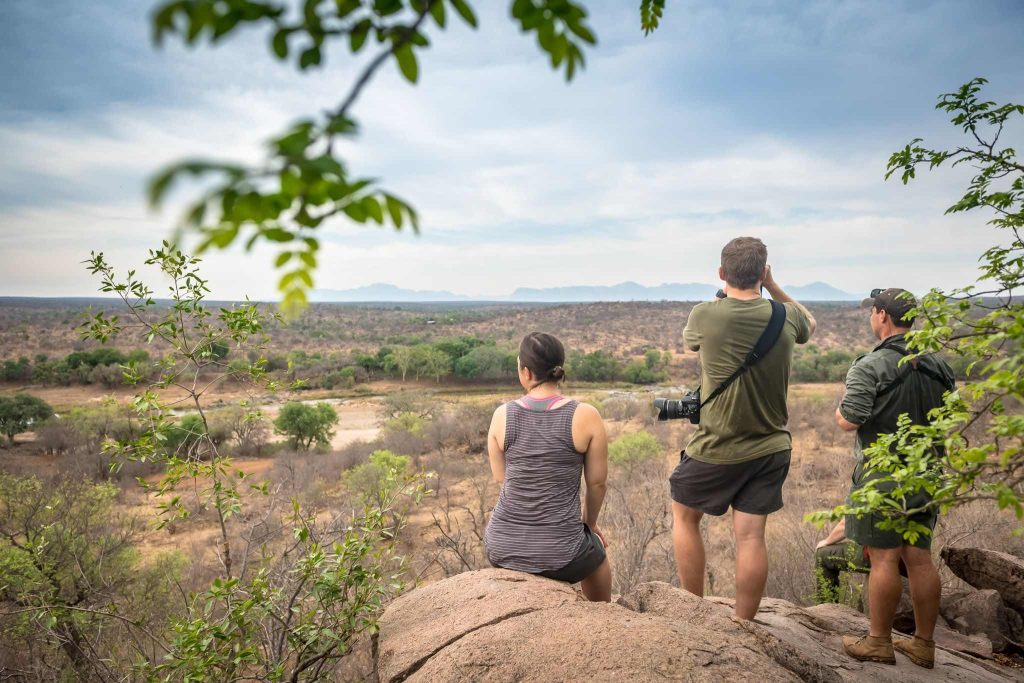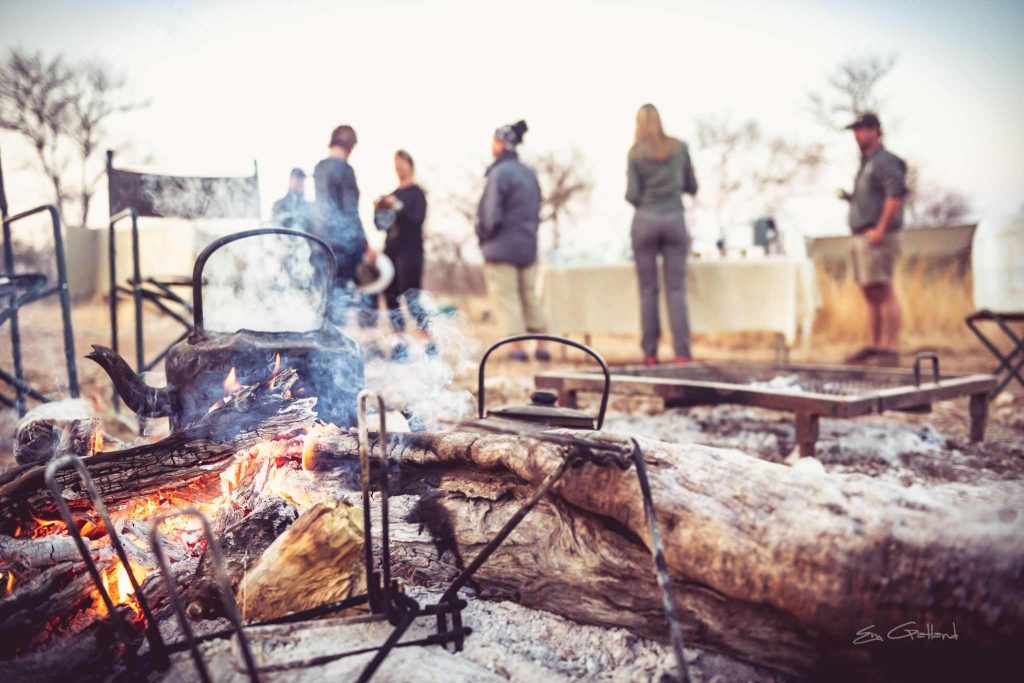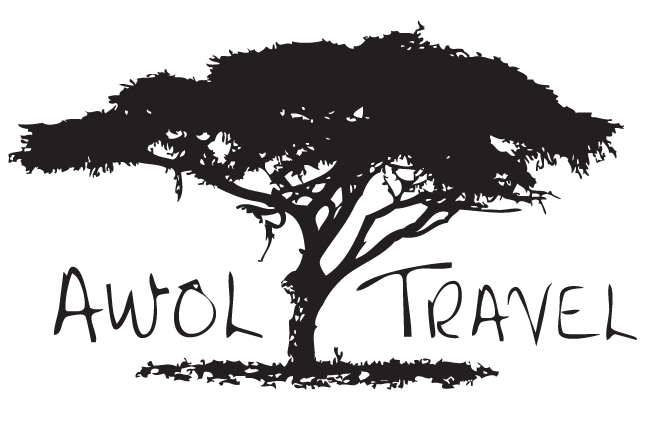
Exploring the African bush on foot is one of the most immersive ways to experience Kruger National Park. Without the barrier of a vehicle or the distraction of a phone, walking safaris bring you closer to the sounds, smells, and subtleties of the wild. Whether you’re interested in tracking animals, learning about ecosystems, or just slowing down, there are several excellent walking safaris to choose from in and around Kruger. This guide compares three distinct options: Rhino Walking Safaris, Pafuri Walking Trails, and Africa on Foot Wilderness Trails.
Rhino Walking Safaris – Southern Kruger
Located in a private concession near Skukuza (main hub in Kruger), Rhino Walking Safaris combines Big 5 encounters with guided walking and game drives. Guests stay at Plains Camp, which offers en-suite safari tents with hot water and comfortable beds. The camp includes brunch, high tea, dinner, teas and coffees, and one sundowner drink during the evening game drive. Additional drinks can be added via a drinks supplement.
Image courtesy of Rhino Walking Safari

A unique optional “Sleep-Out” experience where guests sleep on raised decks in the open bush under the stars. It’s weather dependent and only included if the first guests who book a trail request it. Walks are usually in the early morning and late afternoon, led by two armed guides. Guests must be 12 years or older to participate.
The presence of both dangerous game and expert guides ensures a high-adrenaline but safe walking experience. This option is ideal for guests who want to blend close wildlife encounters with the convenience of private lodge amenities.
Pafuri Walking Trails – Makuleke Concession (Far North Kruger)

Image courtesy of of guest, Klaus Kunde-Neimoth, on walking safari with Pafuri Walking Safaris
In northern Kruger, the Pafuri Walking Trails operate in the Makuleke Concession, one of the most ecologically and culturally rich areas in the Greater Kruger. Guests can choose between two seasonal, en-suite tented camps: Nkula and Hutwini, both offering hot showers, wholesome meals, and fireside evenings. Walks are slower-paced and immersive, focusing on tracks, plants, birdlife, and cultural heritage. Game drives are used to access walking locations.
The landscape features dramatic gorges, fever tree forests, Ramsar wetlands, and ancient baobabs. This region is known for its exceptional birdlife (over 450 species), regular elephant, buffalo and nyala sightings and a wide variety of plains game (including eland, spotted hyenas, hippos and crocodiles).
The true heart of the area lies in its cultural significance—home to the sacred Thulamela Ruins and the Makuleke people, who are the custodians of this extraordinary land.
Africa on Foot Wilderness Trails – Maseke Balule Reserve (Greater Kruger)

Image courtesy of Africa on Foot
For a more mobile and adventurous experience, Africa on Foot Wilderness Trails offers a moving walking safari in the Maseke Game Reserve. The camp is entirely portable—after the morning walk, the ground crew relocates everything to a new location, leaving no trace behind.
Accommodation is in dome-style tents, pitched directly on the ground with comfortable mattresses (swags), bed linen, and each tent does has its own en-suite hot bucket shower and chemical toilet. canvas mess tent provide meals and shelter. A private chef prepares meals over the fire, and guests dine under the stars.
Morning walks are roughly 7km per day which take 3–4 hours through varied terrain, with guides focusing on animal behaviour, landscapes, and bush skills. The afternoon game drive sets the tone of the day .

Compare at a Glance
| Feature | Rhino Walking Safaris | Pafuri Walking Trails | Africa on Foot Trails |
|---|---|---|---|
| Location | Southern Kruger | Far North (Makuleke) | Middle Kruger (Maseke) |
| Habitat | Bushveld, Big 5 area | Forest, rivers, wetlands | Mixed terrain, remote |
| Accommodation | En-suite tents | Seasonal tents with showers | Dome tents, bush showers |
| Walk Style | Game-focused, mix with drives | Interpretive, scenic | Mobile trail camp |
| Unique Feature | Optional Sleep-Out decks | Cultural sites, biodiversity | Camp moves daily |
| Wildlife | High Big 5 density | Elephants, 450+ birds, nyala | Varies – immersive |
| Minimum Age | 12 (8 for Sleep-Out) | ~12+ (varies) | Group dependent |
| Connectivity | No signal, limited Wi-Fi | No signal | No signal |
The best time of year for a walking safari in Kruger is during the dry season, from May to September. During these cooler winter months, daytime temperatures are mild, vegetation is thinner, and wildlife tends to congregate around water sources—making animal sightings more frequent and walking more comfortable. There’s also less risk of rain disrupting activities like sleep-outs or mobile camps. While mornings can be chilly, especially in June and July, the clear skies and reduced humidity make this the most reliable and rewarding time for exploring the bush on foot.
A walking safari is one of the most meaningful ways to explore Kruger. Whether you want to track rhino in the south, listen for nightjars in the baobab forests of the north, or hike to a new campsite each day, these options let you slow down and reconnect. The right fit depends on your comfort level, interests, and how deep into the wilderness you’d like to go.
No matter which you choose, get off grid and you’ll return with a greater understanding of the bush—and maybe a little less desire to check your phone. Contact your AWOL Trip Planner for more information and how to choose the right safari for you.
